When Nazi Germany invaded the Soviet Union in June 1941, the Soviet Red Army was a disorganised mess. With senior leadership decimated by Stalin’s purges, outdated equipment, and no real strategic vision, and the Germans driving hard for the gates of Moscow, it seemed there was little the Soviets could do to turn the tide.
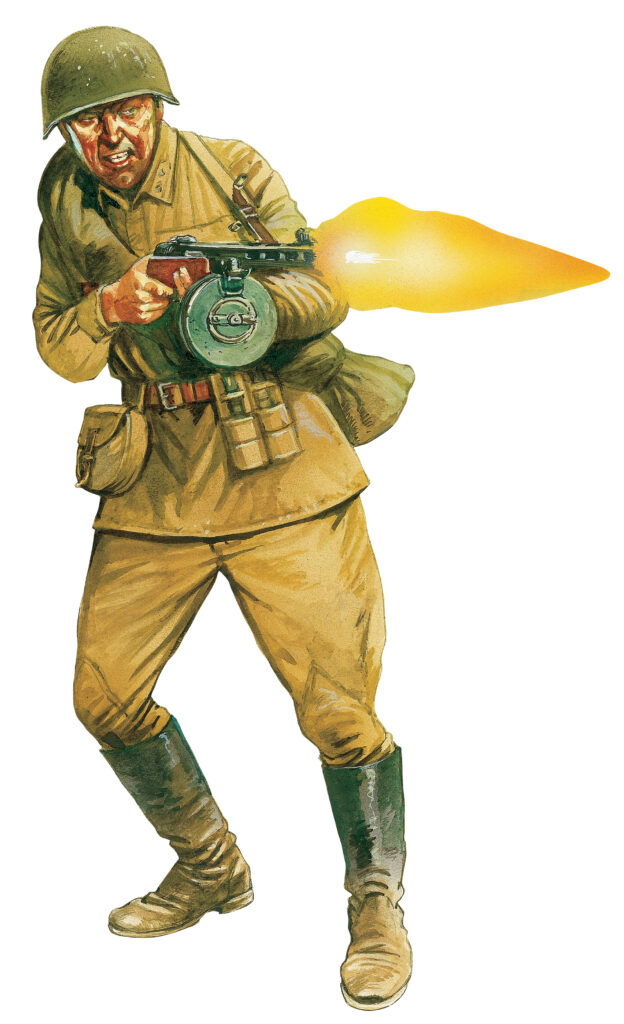
Less than four years later, the all-conquering Red Army would march in triumph through the shattered ruins of Berlin, having crushed the German forces opposing them in the east and driven them back through Europe. The reasons behind this complete reversal are many and complex – better leadership, more modern equipment, and Germany’s having to fight on two fronts simultaneously to name but a few – but it was the Soviet soldier marching down the Charlottenburger Chaussee in the great victory parades of 1945 that was the driving force behind it all. Let’s examine him!
Regarding Soviet infantry, Stalin is famously quoted as saying that “quantity has a quality of its own”. While this is undoubtedly true, it does do something of a disservice to the ‘average’ Soviet infantryman. The truly vast manpower reserves available to the Red Army were certainly an enormous asset, but it must also be acknowledged that the individual soldiers were capable of great military feats and acts of bravery, and were generally tough, resilient, and well-motivated. There were exceptions, of course, and Bolt Action abstracts all these intangible qualities to the metric of Veterancy, but on the tabletop (as in life), the Soviet infantryman is far more than simply a face in the crowd.
In our Bolt Action range, Soviet players have three plastic boxed sets (and many more metal ones!) from which to assemble their infantry. We’ll largely focus on the plastics (Summer uniforms, Winter uniforms, and the (mixed plastic and metal) Siberian Veterans), and all the cool units you can make out of them! The ‘basic’ plastic infantry boxed set nets you 40 (count ‘em!) soldiers, half in the warm padded Telogreika jackets and trousers, and the rest in the standard Gymnastyorka uniform tunics. Featuring a selection of helmeted heads as well as Pilotka side-caps, as well as an array of weaponry, they’re ideal for any theatre at any point in the war. For colder climes and winter wars, there’s the accompanying boxed set of winter-uniformed troops, bundled up in telogreika or the Shinel greatcoat. Many of the heads are swathed in scarves, and there’s plenty of the iconic Ushanka fur-lined caps to go around. Finally, the Siberian Veterans box adds an awesome selection of metal components (and complete figures) to the standard box, allowing you to build 34 of these feared soldiers. Armed with these three kits, there’s a whole bunch of different units you can build for your Bolt Action Soviet force!
Early-war Soviet infantry units tend to be a little bit more single-focus than many other nations, which makes for some interesting tactical usage, while their later-war squads can be very powerful indeed. We’re going to look at a few found in Armies of the Soviet Union – Rifle, Light Machine Gun, Submachine Gun, Tank Riders, Guards, Veteran, and Shtrafbat Squads, to be precise. To represent the often somewhat ad-hoc nature of Soviet supply lines and unit formation, I like to mix and match all three Soviet plastic kits in each unit, but I’ll point out where certain modelling choices might be best in the individual unit sections. A whole range of extra unit types are available within the ever-expanding library of Bolt Action Campaign supplements, but in the interest of brevity, we’ll save those for another article.
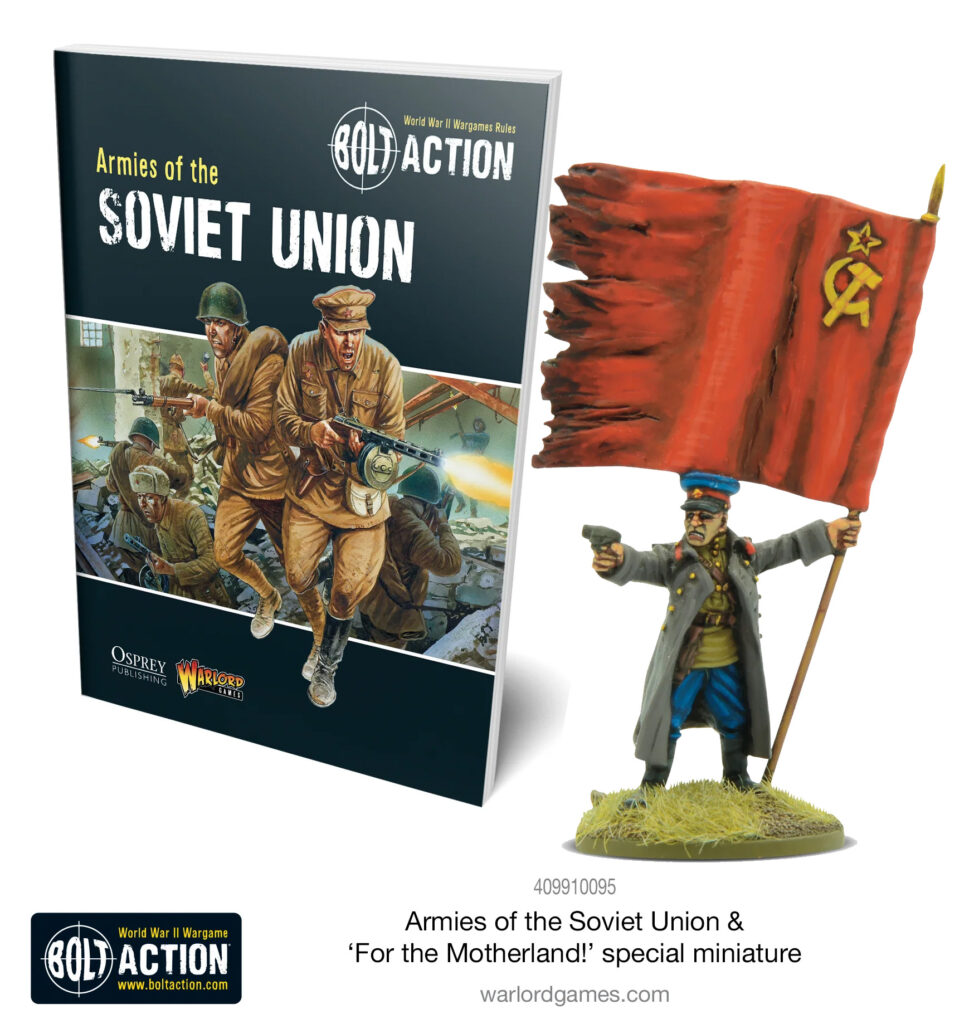
We’ll start with the one unit every Soviet player is guaranteed to have – because they get it for free! The Rifle Squad is a certified Soviet classic – twelve Inexperienced dudes with rifles and Molotov Cocktails – that also fills the ‘cheap-but-useful’ niche if you want to bring more than just the one free squad. Green is a good special rule to have, and at 84 points for a full squad (108 with anti-tank grenades), you can get a lot of bodies for not many points. While not particularly durable (as is the case with all Inexperienced infantry), there’s always the chance that Green will bring them up to Regular, and with twelve of them they can put out a surprising level of firepower! Personally, I like to hold them behind some handy bit of cover or line-of-sight blocking terrain until late in the game, and then make a last-minute dash for a vital objective or to threaten enemy units caught in vulnerable positions. At the end of the day, they’re free, so any achievement is a nice bonus!
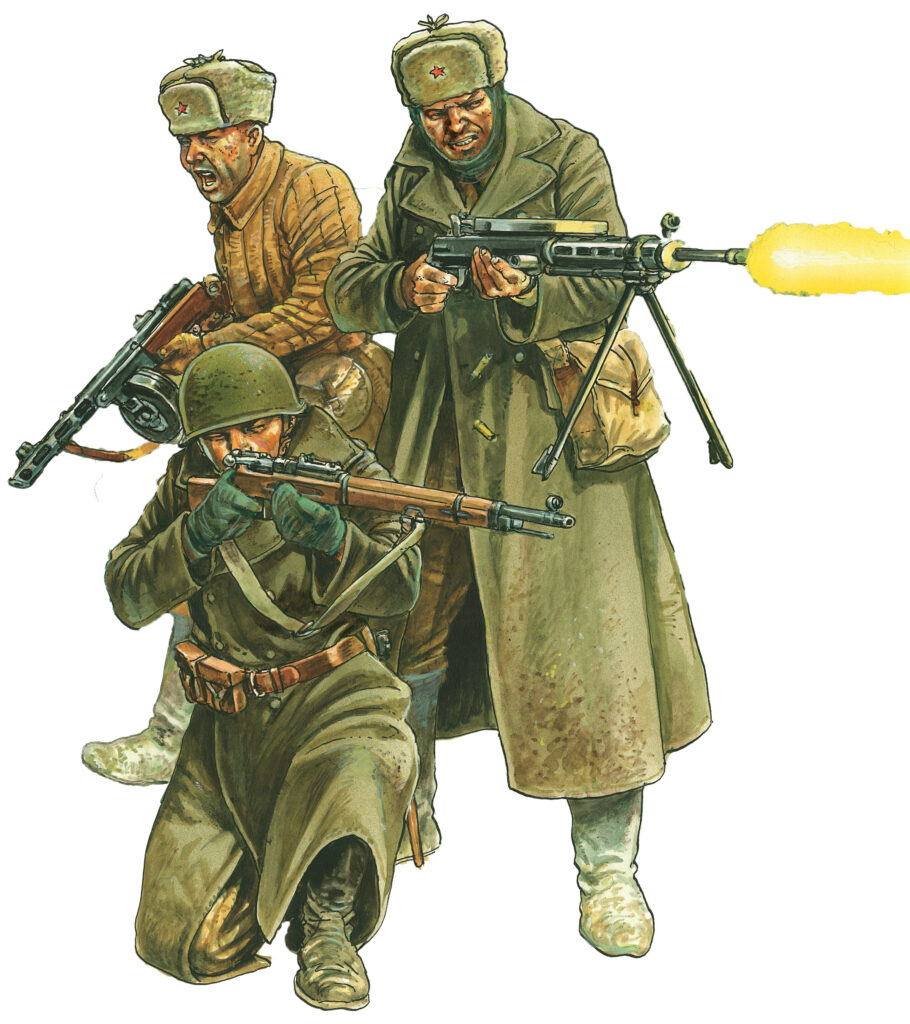
Next, we have the Light Machine Gun Squad – a bit of an oddity in that they’re an Inexperienced or Regular infantry squad that can take two LMGs, which is usually the preserve of Veterans. While taking them at Inexperienced can really hurt their ability to lay down fire (with the -1 To Hit penalty), at Regular they can provide a solid (and inexpensive) firebase for your army. I’d utilise them in one of two ways – either a five-man squad with two LMGs at 90pts for Regular, or as a full-size squad with both machine guns (160 points at Regular). The smaller version of the unit is a bit of an economy choice, but can be holed up in a building, ruin, or similar cover to provide some long-range supporting fire, while being a little more durable and effective than a medium machine gun team, while the big squad gives us eight LMG shots, plus eight riflemen (remember, there are two men serving as loaders!) for a very respectable 16. This is the kind of unit that provides a strong core for your army, capable of a rock-solid defence or decisive attack, and one of my absolute favourites in the entire army book.
From long-range to short, we come to the Submachine Gun Squad. Available again as Inexperienced or Regular, and (as the name suggests) with every man packing an SMG, this squad can pump out a blistering 24 shots inside 12”. As they’re expected to be up close and personal, I definitely prefer them at Regular, but for a mere 50pts for a five-man Inexperienced squad you get a surprising amount of (dubiously accurate) close-range fire, which can sometimes be just what you need late in the game to get rid of an annoying unit. A full twelve Regulars will run to 156pts if you don’t give them anti-tank grenades or an LMG (which I consider to be a bit of a trap as its long-range firepower doesn’t mesh with the up-close role of the squad), and this makes a really nice companion for a big LMG squad – they hang back and support, while the SMGs get in and do the dirty work. Very few squads outside of super-expensive late-war German elites can pull off this level of firepower, and they cost a lot more points, so be sure to capitalise on this – why not bring two?
Very similar to the SMG Squad are the Tank Riders. Coming in Regular or Veteran flavours, these chaps (rather obviously) get to ride on top of your tanks! While they can wear Body Armour (our Assault Engineer figures represent this perfectly), I think they’re slightly more useful without, as I’m a big fan of being able to Run 12”! Treat them much like an SMG Squad, with the added bonus of having a whopping great tank nearby for moral (and fire!) support.
Moving a little later in the war, we have the Guards Squad. Historically, these were units recognised for their combat record and given priority for equipment and replacement manpower, and considered as elite, but the fact that the ‘Guards’ distinction was given to entire regiments (with varied levels of combat experience across their men) means we rate them as Regulars with good kit in Bolt Action. With the ability to be uniformly outfitted with either rifles or SMGs, plus the option to take up to two LMGs and a Panzerfaust, Guards squads are incredibly versatile and one of the most useful options available to any Soviet commander. For later-war armies they more or less replace the SMG or LMG squads (without, of course, the ability to run cheap and cheerful as Inexperienced), and will form a dependable core to a Soviet Army as you march on Berlin. As the Guards got first priority on equipment and weaponry, I’d model them as uniformly as possible, and certainly make sure each man has a helmet!
Like the Guards but ‘arder, we have the Veteran Squads. Unsurprisingly rated as Veteran, these hardened fighters represent the very best of the Red Army. Their equipment options are essentially the same as Guards squads, but with one crucial difference – they may be upgraded to Tough Fighters for 1pt per man. I like to use this on a full-size squad equipped with rifles, two Panzerfausts, and two LMGs – it’s pricey (for a full 11-man squad kitted out thusly it’s 204pts), but this gives you a unit that can essentially go anywhere and do anything, which you’d hope it would, given that it’s a full fifth of your army at 1,000 points! The rifles and LMGs allow for good long and mid-range firepower, while the Panzerfausts provide a limited but meaningful anti-tank capability. If the fighting gets down to close quarters, Tough Fighters means they can pack a serious punch in an Assault, which may well take your opponent by surprise, given that they look like they’re optimised for long-range combat! The grizzled ushanka-wearing heads from the Siberian Veterans are perfect for these hard-bitten soldiers, and I’d mix and match their equipment to represent each man fighting how he preferred. Alternatively, for those very cold environs, consider the metal Veterans in Snowsuits!
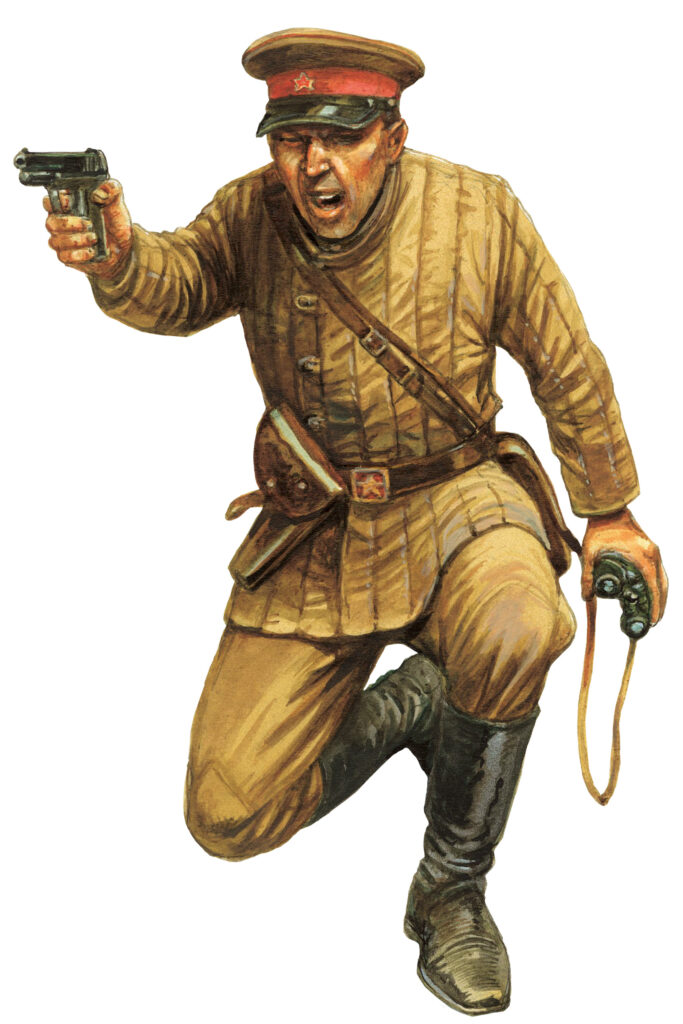
From the awesome to the really, really rubbish, we come to the infamous Shtrafbat punishment battalion troops. These unfortunates could be sentenced to the Shtrafbat for a wide variety of reasons, including cowardice, theft, or ‘political unreliability’, and this was essentially considered a death sentence despite the fact it was theoretically only three months of service. This was because, quite simply, they were considered expendable, being used to draw enemy fire, clear minefields (by walking through them), or for any other menial task with a high chance of death. Frequently they were not armed, and the attrition rates were simply awful. On the Bolt Action tabletop, they aren’t what you’d call ‘good’ troops, but they are very, very cheap, especially if you take a bunch of them with no weapons at all! Remember that as per the Bolt Action FAQ, Shirkers are very easy to Pin out of the game, so under no circumstances rely on them to stick around, but sometimes you just need some warm bodies… To build them, handily the Soviet kits have separate arms and weapons, so simply… omit the weapons!
As a final note on modelling, the Winter Soviet plastics are pretty compatible with some of the Winter German arms – given the Soviet’s propensity to use captured German weaponry (particularly the MP40 and Panzerfaust), this can help to jazz up your squads and give you some unique-looking models. Just remember, the cuff turnbacks are slightly different lengths, so make sure to use either two German or two Soviet arms, to avoid any fashion crimes!
Prepare to advance, comrade. Onward to Berlin!
Start Collecting Soviets
Our trio of Soviet starter armies all provide a great value core to your Bolt Action Soviet force – massed Red Army infantry supported by deadly armour and suppressive firepower support.

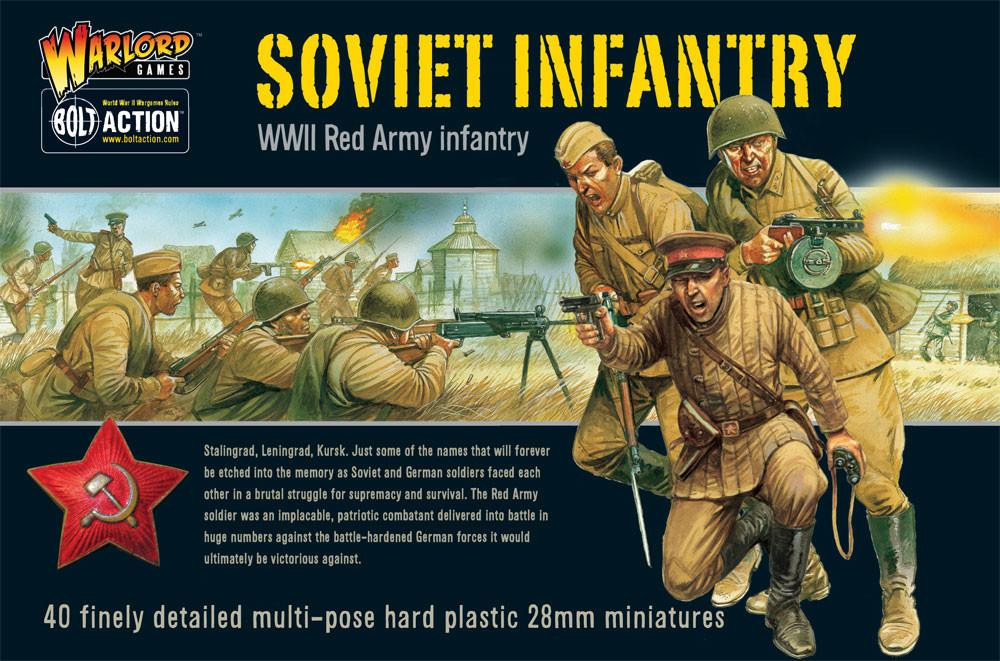
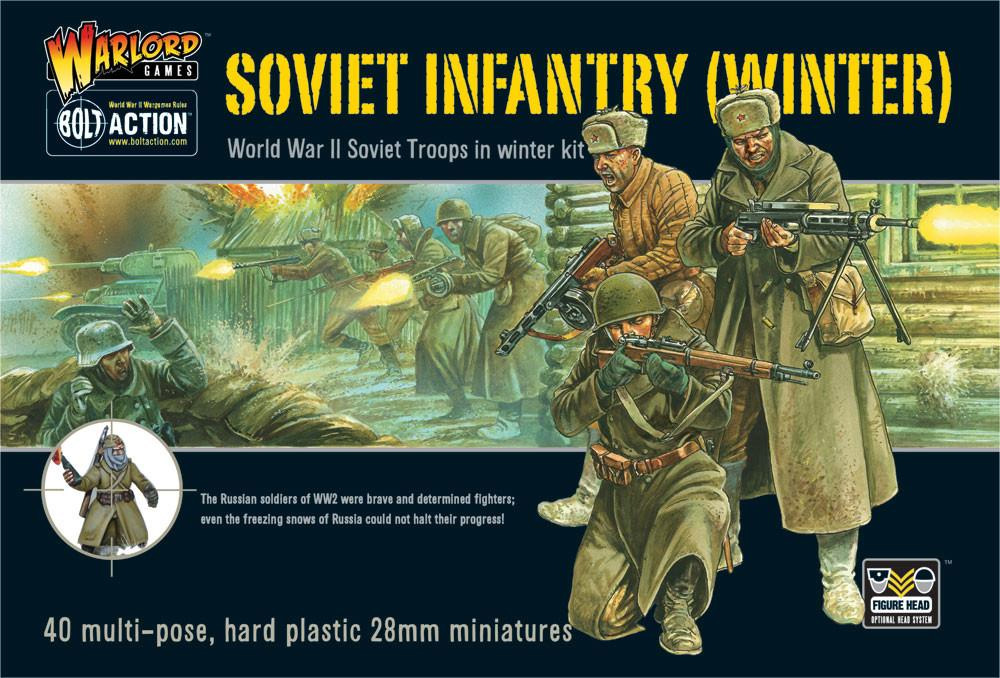
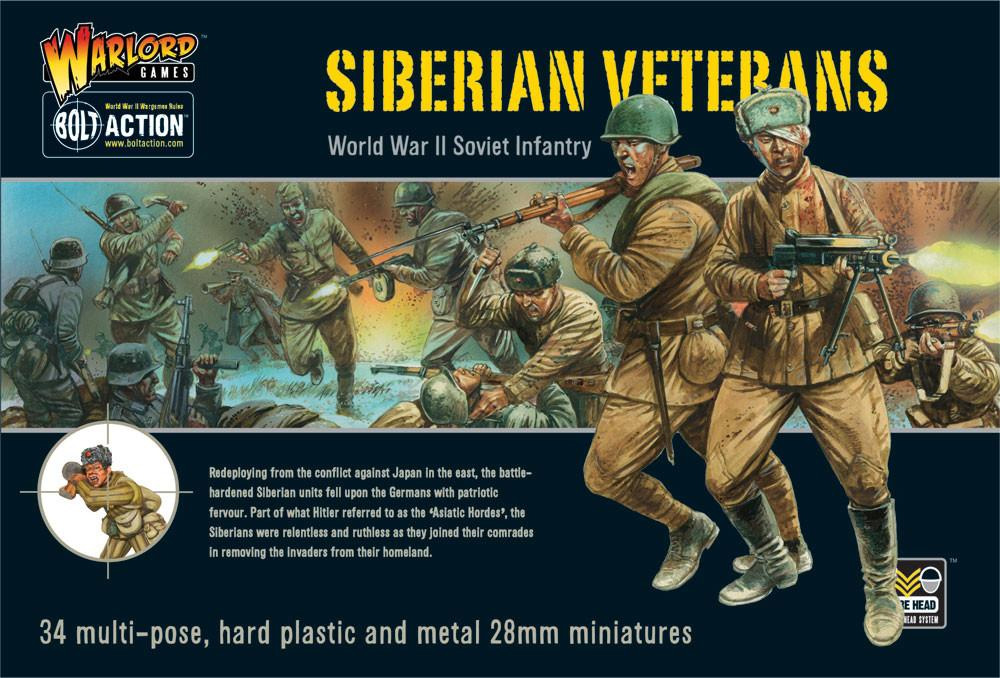

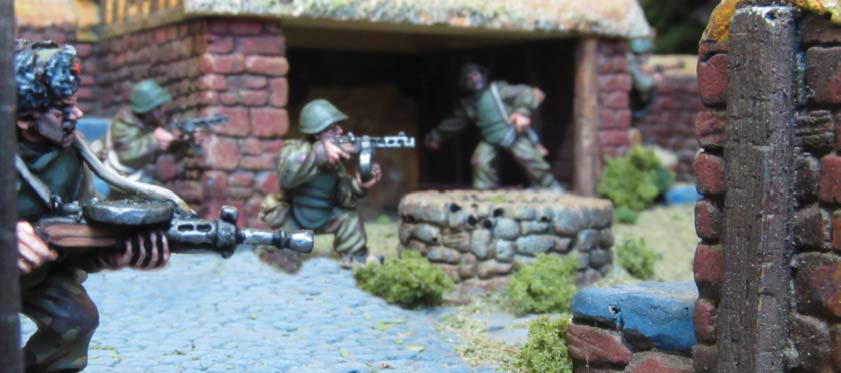
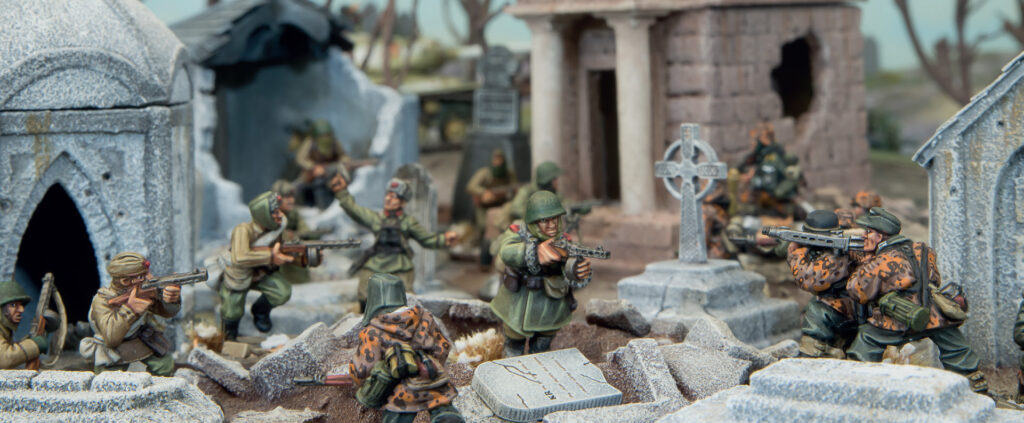
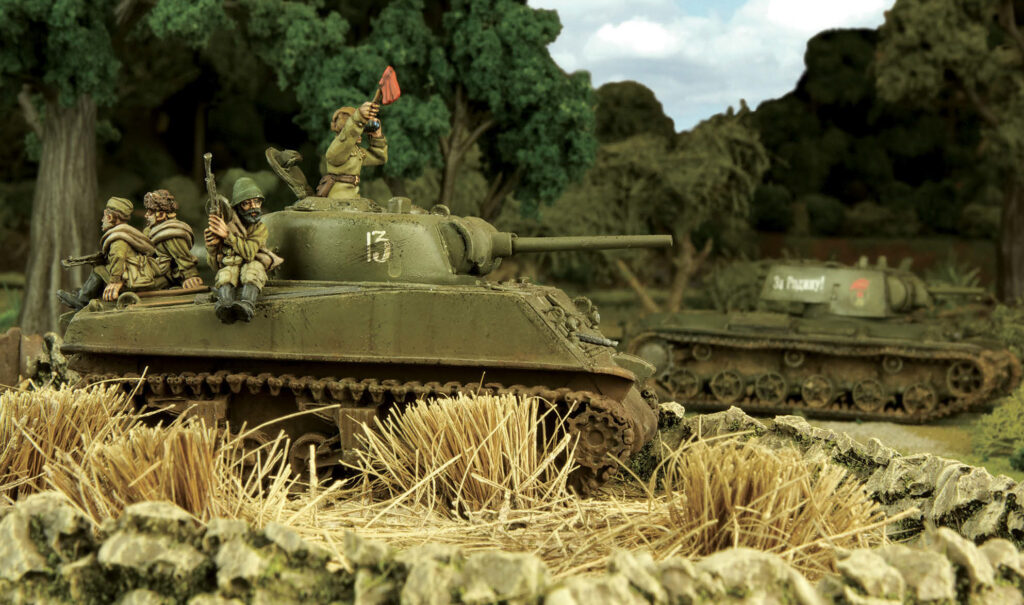
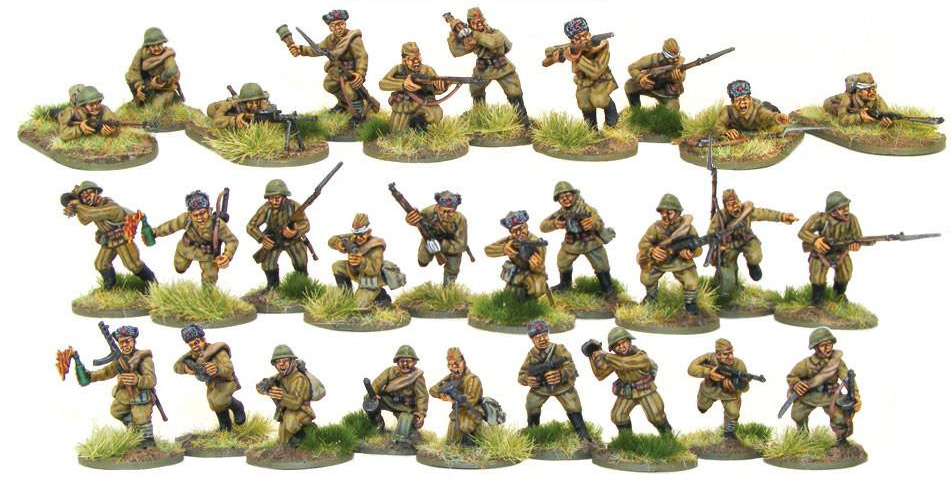
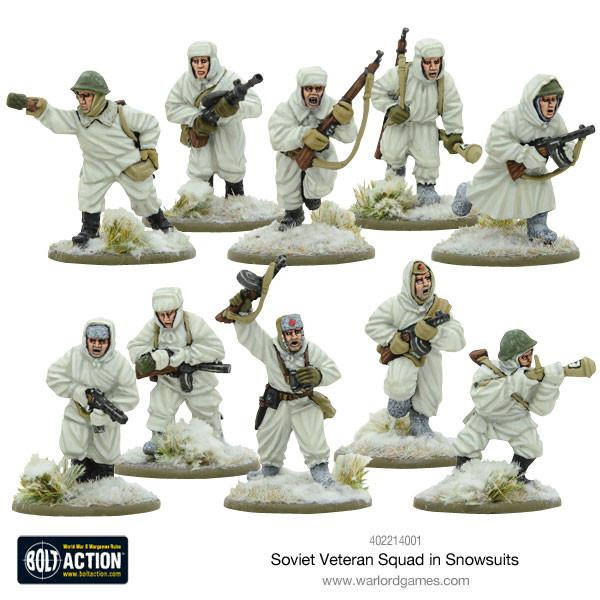
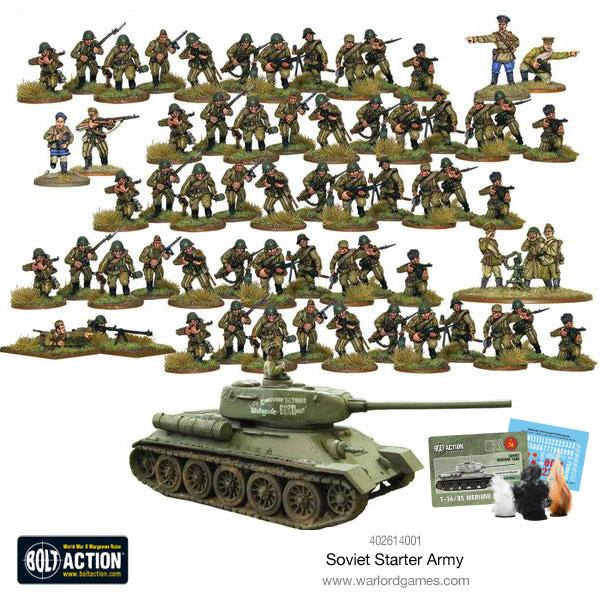
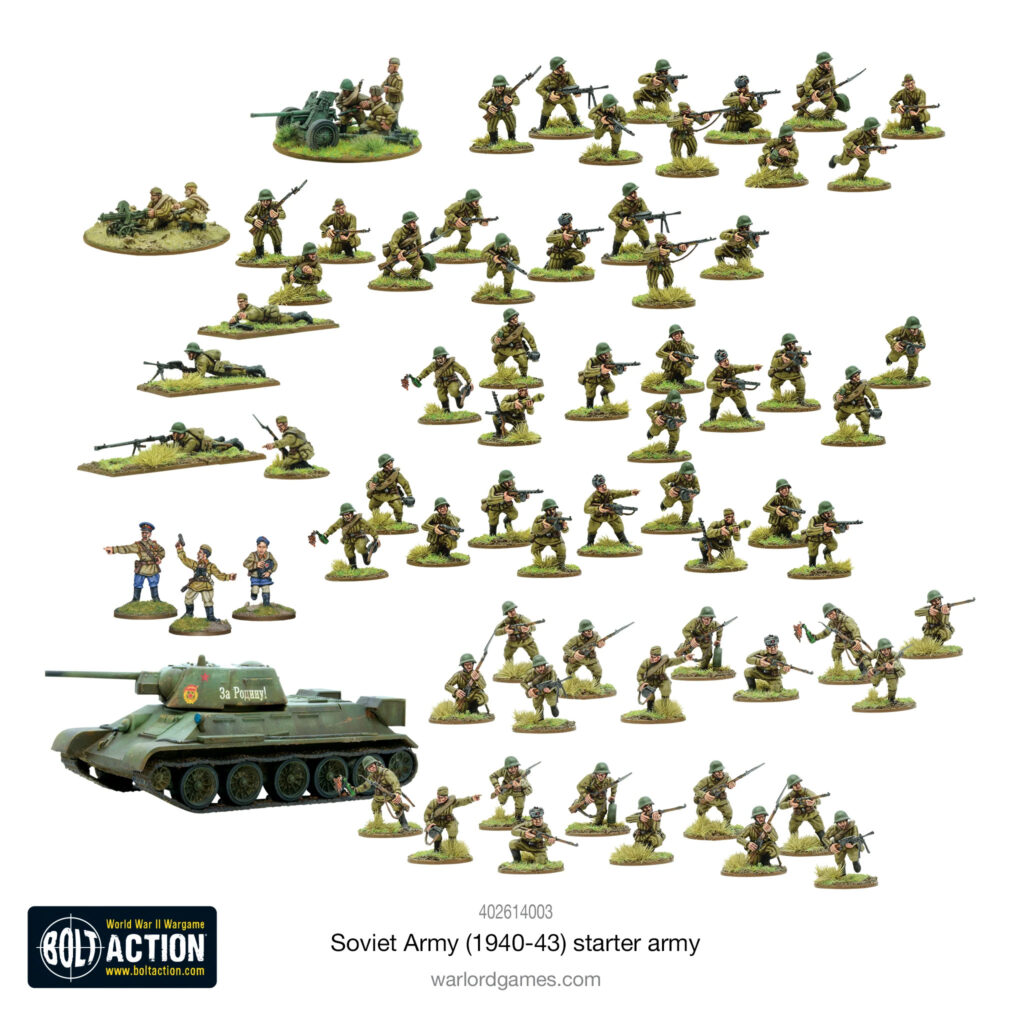
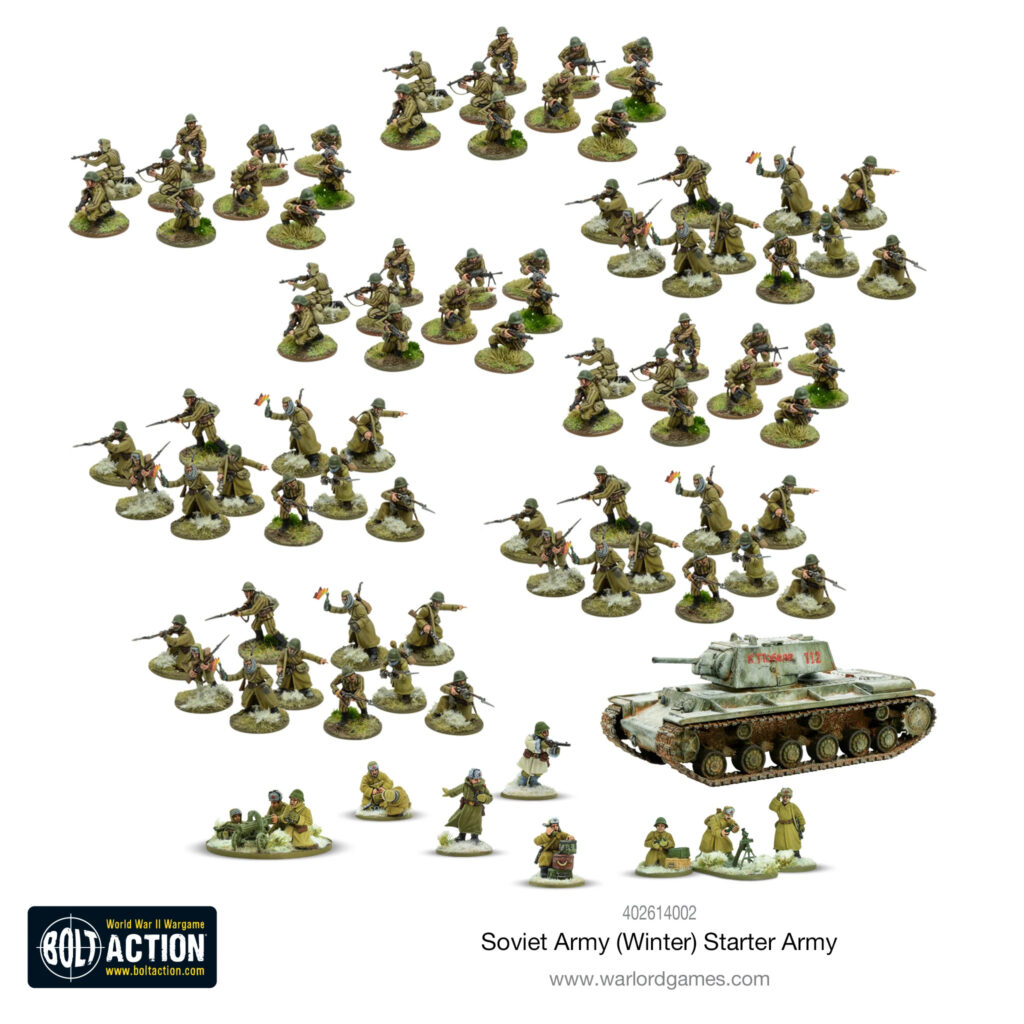
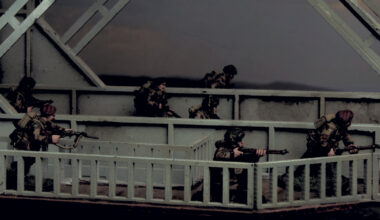
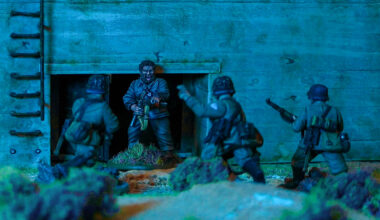
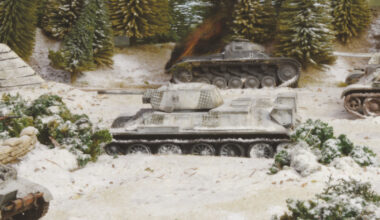
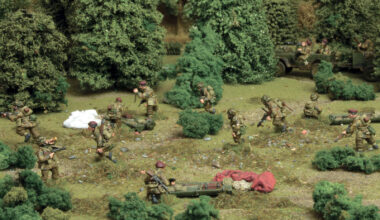
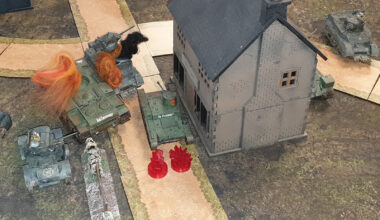
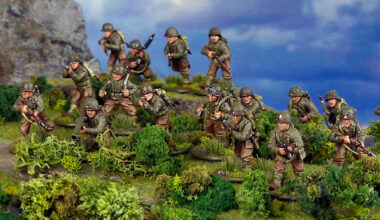
1 comment
Are there rules somewhere for the use of captured equipment? I’m always a little miffed about the Russians using panzerfausts. The Japanese players in our group are always using American Stuart tanks. I’m getting a KV1 with a German 75, M3 scout cars with MG34s along with the Browning .50 cal. My Brandenbergers will make use of them. I’ve even got some Ursus infantry painted in German uniforms, for Konflikt 47 play….
Comments are closed.